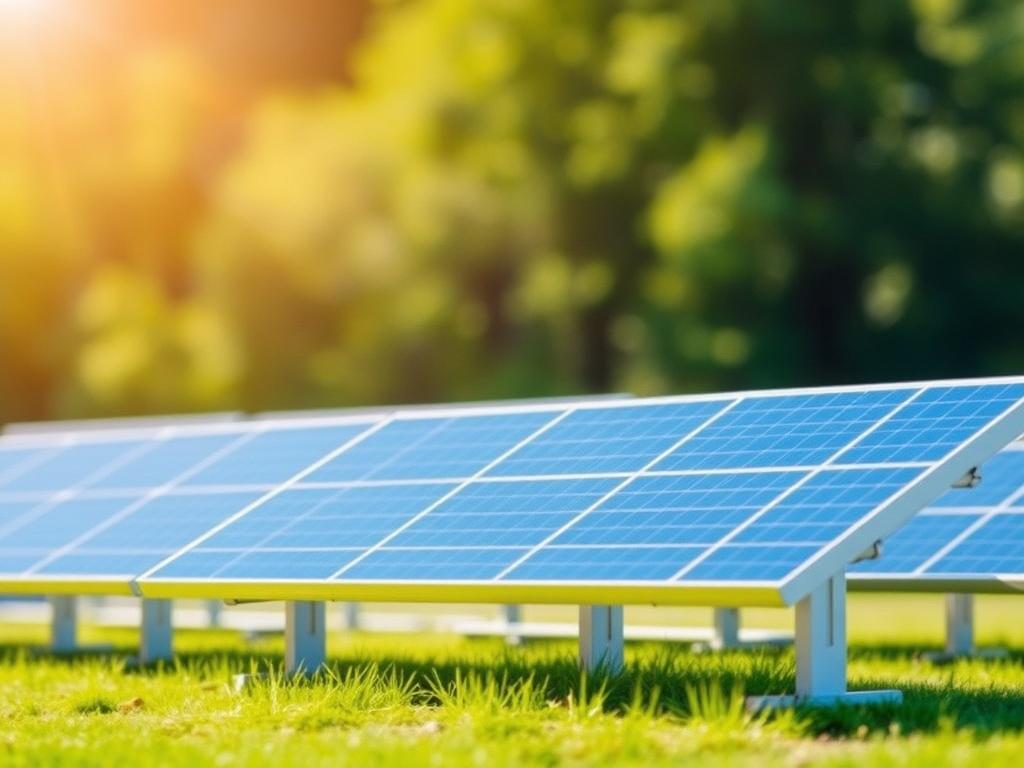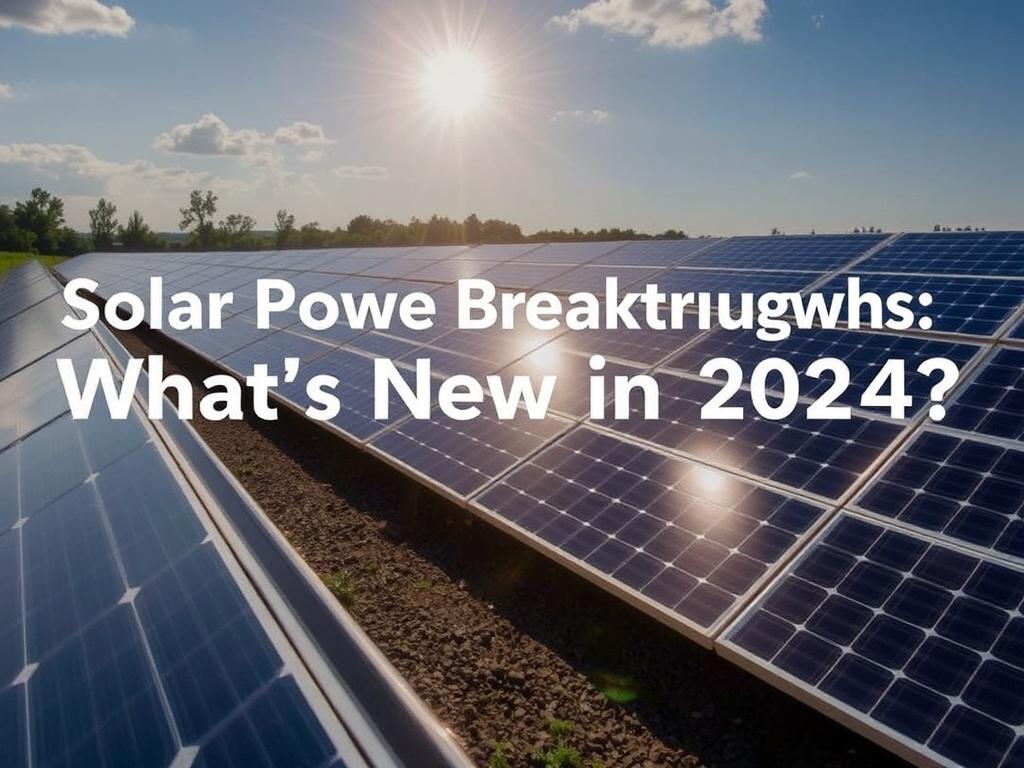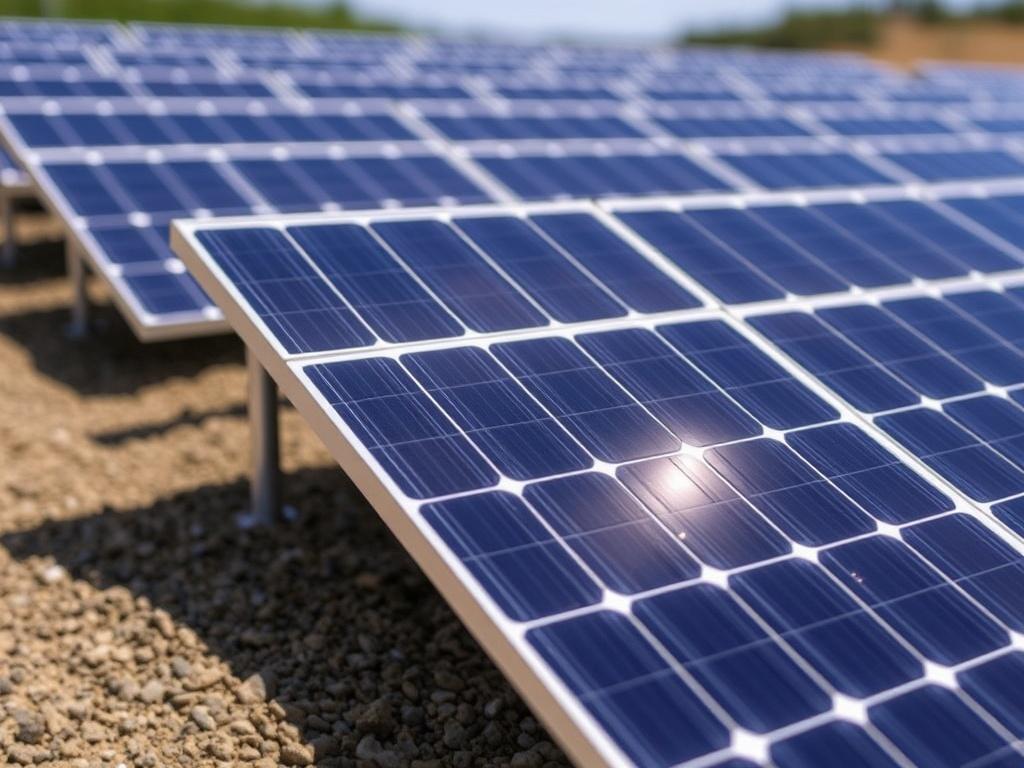- The Evolution of Solar Power Technology
- Breakthrough Solar Cell Materials
- Table: Comparison of Key Solar Cell Technologies in 2024
- Revolutionizing Solar Power Storage Solutions
- Key Storage Solutions for Solar Power in 2024
- Cost Trends and Economic Impacts of Solar Power
- Economic Benefits of Solar Power in 2024
- Solar Power Integration with Smart Technologies
- Smart Solar Technologies to Watch in 2024
- Global Solar Power Projects and Their Impact
- Noteworthy Global Solar Projects in 2024
- Conclusion
Solar power has been making incredible strides over the past decade, transforming from a niche technology into one of the leading sources of renewable energy worldwide. The year 2024 brings fresh breakthroughs that are poised to accelerate the adoption of solar energy even further, making it more efficient, affordable, and accessible than ever before. Whether you are a homeowner considering solar panels, a policy maker looking at energy solutions, or simply curious about what’s driving the green energy revolution, this article dives deep into the latest advancements in solar power this year.
The Evolution of Solar Power Technology

To appreciate the new breakthroughs in solar power, it’s important to understand how the technology has evolved historically. Solar cells, also known as photovoltaic (PV) cells, convert sunlight directly into electricity. Early solar cells had efficiencies hovering around 10-15%, which limited their appeal and commercial viability. Over time, innovations in materials science and manufacturing processes have pushed efficiencies beyond 20%, with some specialized cells reaching above 30% in laboratory settings.
In 2024, the solar power landscape is marked by significant improvements in multiple areas: cell efficiency, cost reduction, integration with smart technologies, and storage solutions. Each of these components plays a critical role in meeting global energy demands while battling climate change.
Breakthrough Solar Cell Materials
This year has seen the rise of new solar cell materials that promise to overcome limitations of traditional silicon-based panels. Perovskite solar cells, for example, continue to make headlines due to their high efficiency potential and relatively low production costs. Unlike silicon, perovskites can be fabricated using simpler manufacturing techniques and flexible substrates, which could revolutionize the way solar panels are deployed.
Another cutting-edge innovation is tandem solar cells, which stack multiple layers of different materials to capture more of the light spectrum. Combining perovskite with silicon, these tandem cells can reach efficiencies exceeding 30%, outperforming conventional single-junction cells. Researchers are also experimenting with organic photovoltaics and quantum dot solar cells, which could unlock new possibilities in lightweight and even transparent solar panels.
Table: Comparison of Key Solar Cell Technologies in 2024
| Technology | Average Efficiency | Cost | Durability | Unique Advantage |
|---|---|---|---|---|
| Monocrystalline Silicon | 20-22% | Moderate | High (25+ years) | Proven dependable performance |
| Perovskite | 25-30% (lab scale) | Low | Moderate (improving) | Low-cost, flexible manufacturing |
| Tandem (Silicon + Perovskite) | 30%+ | Higher (early commercial) | Moderate | Highest efficiency to date |
| Organic Photovoltaics | 15-20% | Low | Low (developing) | Lightweight, flexible, potential transparency |
Revolutionizing Solar Power Storage Solutions

No solar power system can reach its full potential without an effective energy storage mechanism to capture electricity generated during sunny hours for use when the sun isn’t shining. In 2024, energy storage breakthroughs are rapidly reshaping how solar power is integrated into homes, businesses, and power grids.
Advanced lithium-ion batteries remain the most common energy storage solutions for solar systems. However, new types of batteries, such as solid-state and flow batteries, are gaining traction. Solid-state batteries promise higher energy density, longer lifespans, and improved safety due to their solid electrolytes instead of liquid ones. Flow batteries, meanwhile, offer scalable and longer-duration storage, vital for managing grid fluctuations and providing backup during extended cloudy periods or nighttime.
Additionally, coupling solar power with smart grid technology has become increasingly common. These smart systems use AI and predictive analytics to optimize when to store energy, when to use it directly, and how to feed excess power back into the grid efficiently. This integration helps reduce energy wastage while lowering electricity bills for consumers. 2024 also sees promising developments in solar-powered hydrogen generation, where excess solar energy is used to produce hydrogen fuel, creating an innovative storage and clean fuel option.
Key Storage Solutions for Solar Power in 2024
- Lithium-ion Batteries: Mature technology with steady improvements in cost and energy density.
- Solid-state Batteries: Higher safety and lifespan, coming closer to commercial use.
- Flow Batteries: Ideal for large-scale, long-duration storage with flexible capacity.
- Hydrogen Fuel Generation: Emerging approach to convert surplus solar power into hydrogen for later use.
Cost Trends and Economic Impacts of Solar Power

Cost reductions have played a pivotal role in making solar power competitive with, and in many cases cheaper than, fossil fuels. The remarkable decrease in the price of PV panels over the last 15 years shows no sign of stopping in 2024. Innovations in manufacturing, lower material costs, and the introduction of next-generation solar cells help push prices even lower. This year, bulk adoption of perovskite cells and tandem structures is expected to drive down production costs dramatically once scaled.
On top of the declining hardware costs, government incentives and global initiatives to promote clean energy have made solar investments more attractive. Some countries are launching new subsidy schemes, tax credits, or streamlined permitting processes. Additionally, solar-as-a-service models are growing, allowing consumers to access solar power without upfront expenses.
The economic impacts are wide-ranging: solar power creates jobs in manufacturing, installation, and maintenance; reduces energy poverty by providing power in remote areas; and contributes to healthier environments by cutting carbon emissions. An analysis of the global solar market in 2024 forecasts continued double-digit growth, with emerging economies playing an increasingly important role.
Economic Benefits of Solar Power in 2024
- Lower electricity bills for consumers and businesses
- Job creation in renewable energy sectors
- Energy independence and grid resilience
- Decreased greenhouse gas emissions
- New business models like solar leasing and power purchase agreements
Solar Power Integration with Smart Technologies
The integration of solar power with smart home and grid technologies is revolutionizing how electricity is managed and consumed. Today’s solar systems are not just panels on a rooftop; they’re part of an interconnected ecosystem that includes smart inverters, energy monitoring apps, and AI-powered management tools. These advances help optimize energy use, predict maintenance needs, and balance supply and demand dynamically.
One of the most exciting areas of innovation is the rise of virtual power plants (VPPs), which aggregate the power from many distributed solar systems and batteries to operate like a single power station. In 2024, VPPs are becoming more prevalent, enabling better grid stability and economic benefits for solar owners.
Moreover, solar-powered electric vehicle (EV) charging stations are expanding rapidly, creating a cycle where clean energy charges clean vehicles. Innovations in this space also focus on bidirectional charging—allowing EVs to store excess solar energy and feed it back to households or the grid when needed.
Smart Solar Technologies to Watch in 2024
- AI-driven energy management systems
- Smart inverters with grid-support features
- Virtual power plants (VPPs) for distributed energy resources
- Integration with electric vehicle charging and bidirectional power flow
Global Solar Power Projects and Their Impact
2024 also sees several world-scale solar power projects coming online, highlighting the scale and ambition of the solar revolution. Mega solar farms in sunny regions are producing gigawatts of clean power, helping countries reduce their dependence on coal and gas. These projects not only provide energy but also stimulate local economies and infrastructure development.
Many of these large-scale solar projects now incorporate energy storage and smart grid integration from the start, creating more resilient and flexible power systems. Some innovations even involve floating solar plants on reservoirs, which reduce water evaporation and optimize land use—a win-win for sustainability.
The geographic distribution of solar power projects is diversifying, with Africa, Southeast Asia, and Latin America seeing tremendous growth. These regions are capitalizing on their abundant sunlight and dropping technology costs to leapfrog traditional energy infrastructure.
Noteworthy Global Solar Projects in 2024
| Project | Location | Capacity (MW) | Unique Feature |
|---|---|---|---|
| Desert Sun Large-Scale Solar Plant | USA (California) | 1500 | Integrated battery storage and VPP management |
| Floating Solar on Lake Victoria | Kenya | 200 | Significant water conservation benefit |
| Tandem Solar Park | India (Rajasthan) | 800 | Use of tandem silicon-perovskite panels |
| Solar-Powered EV Charging Highway | Germany | N/A (infrastructure project) | Advanced bidirectional EV charging stations |
Conclusion
The solar power breakthroughs of 2024 mark a pivotal moment in the clean energy transition. From advanced materials like perovskite and tandem cells to smarter, more efficient storage and grid integration solutions, this year showcases how innovation is making solar power more accessible, affordable, and effective than ever before. As costs fall and new projects flourish globally, solar energy is not only helping fight climate change but also driving economic growth, energy independence, and technological progress. Whether through smart homes, massive solar farms, or the latest in battery technology, the future of solar power looks incredibly bright—and 2024 is proving to be a landmark year in that journey.
Как вам статья?







